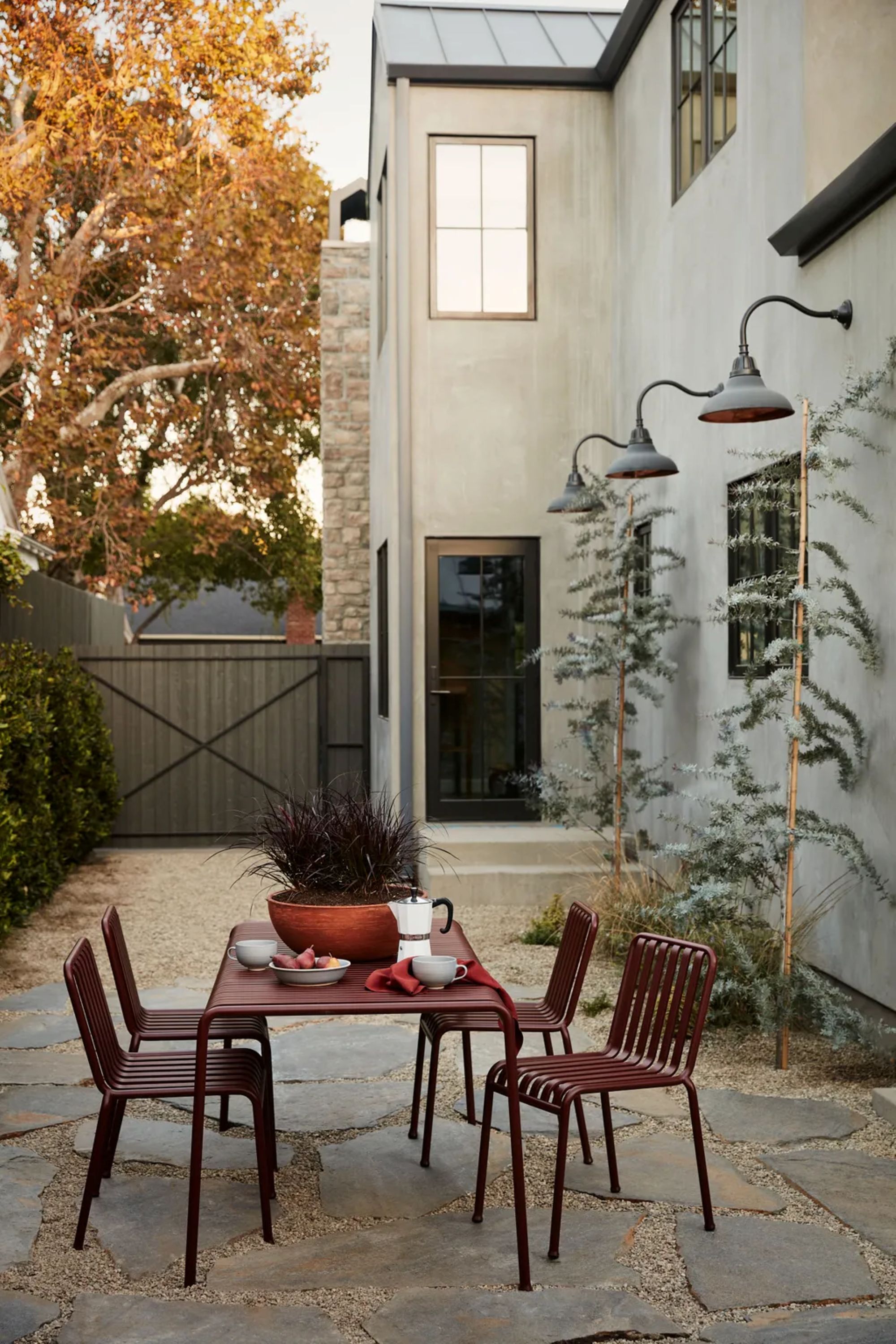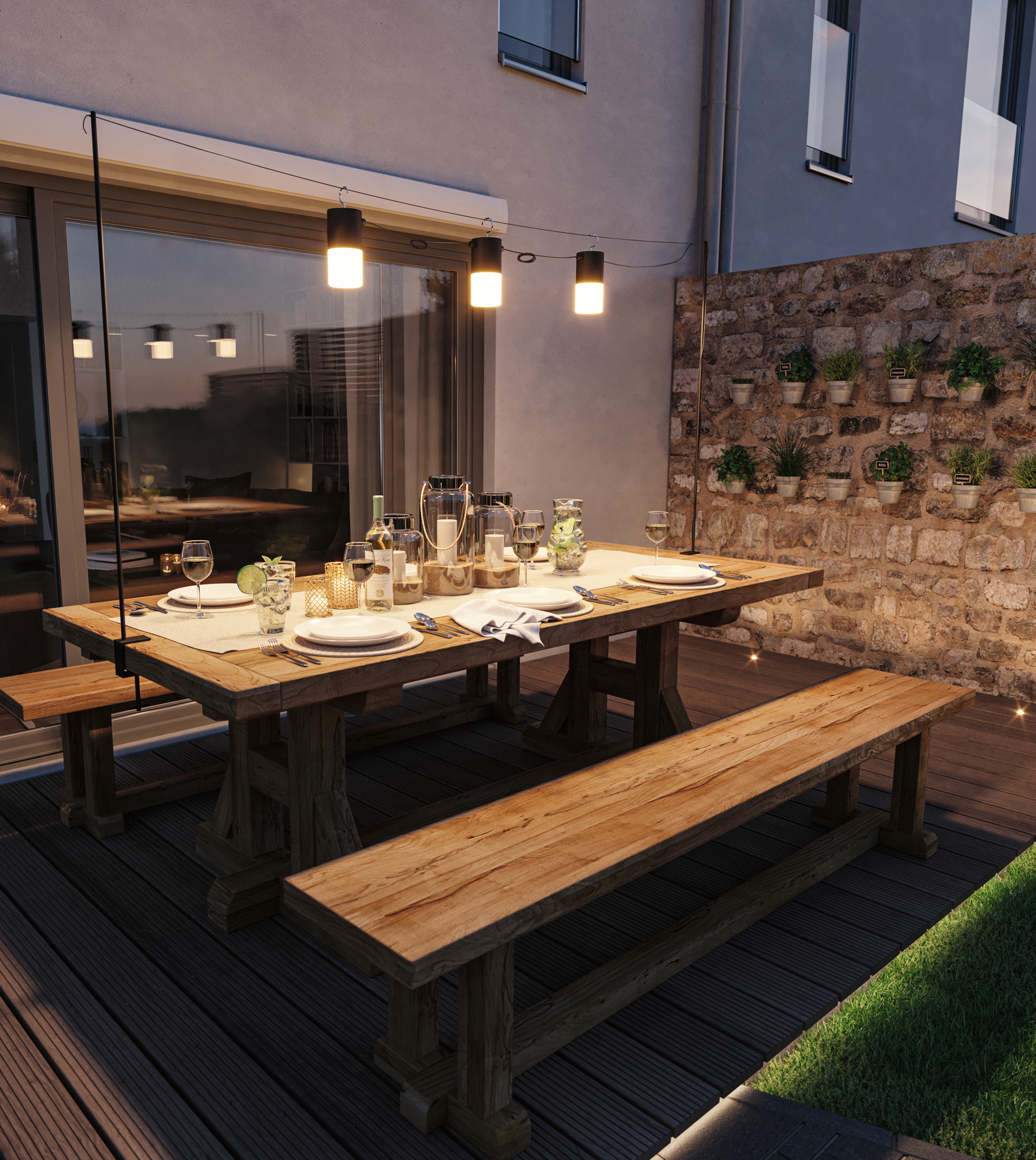How to Hack Your Outdoor Lighting's Settings for a Beautifully Illuminated Yard That's Practical Too
Get your yard party season ready by making sure your outdoor lighting is in check


Getting the balance right between stylish and practical is key when you're planning how to illuminate your garden. There’s nothing more appealing than sitting under a canopy of dimly lit string lights and surrounded by cozy floor lanterns; however, this may not be the best option for every yard.
The secret, it seems, to good garden lighting ideas is in the settings, and how you can change them to suit the mood you want to create, or serve the purpose you need it to.
We spoke to the experts who gave us their advice on the different settings and smart hacks that can ensure your yard is beautifully illuminated, but that it’s also a safe place to hang out at nighttime. Here is what they had to say.
1. Dimmable Lighting

Dimmable lighting gives you the control over how bright your garden is.
While some of the best outdoor lighting is already dimmable, most outdoor light fixtures, as long as they have a removable bulb, can be transformed into a smart light with the capability. This means that you can change the brightness settings through a touch of the screen with your phone or with a voice command through a central smart hub. The dimmability of your yard lighting is key, as you can have them dimly lit for a romantic alfresco meal, but being able to up the brightness for when you’re preparing or cooking is important for safety.
“Landscape lighting should be used to accent certain features, provide lighting at specific safety points, and create general ambiance," explains Jordan Clough of Richardson & Associates Landscape Architecture. "I prefer dimmable LED smart fixtures when possible for the balance of low maintenance and ease of dialling in the right amount of light."

With over a decade of experience, Jordan is a designer who prizes native ecology and sustainable practices just as highly as great design, and is known for his expertise in landscaping construction processes.
2. Dusk-to-Dawn Sensors

Lighting that automatically turns on at dusk is a clever way to keep your garden always looking its best.
You’ll want to avoid using your outdoor lighting when it is not needed. A great way of making sure that this is the case is by installing lighting that features a dusk-to-dawn sensor. Essentially, this means that it will come on at sunset and switch off once the sun comes up in the morning due to an external sensor.
Anne Seigmiller, VP of marketing and sales at Celebright says: "the dusk-to-dawn sensor or ambient light feature creates some great layered effects in your garden without causing light pollution. A balanced, inviting glow that adapts naturally to the changing light conditions of your backyard.”
The Livingetc newsletters are your inside source for what’s shaping interiors now - and what’s next. Discover trend forecasts, smart style ideas, and curated shopping inspiration that brings design to life. Subscribe today and stay ahead of the curve.
3. Create a Layered Lighting System

Different levels of lighting will improve both the looks and practicality.
“A thoughtful lighting design is about so much more than simply illuminating your yard. It’s about creating a layered experience that enhances the way you live in the space,” explains Chris Apfelstadt, founder of Light Up Columbus. “A professional lighting designer starts by thinking in layers: ambient lighting to set the mood, task lighting for key functional areas, and accent lighting to create drama and visual interest. They’ll also help you tailor the technical details, like adjusting brightness, color temperature, and timing, so your lights work seamlessly with your lifestyle.”
For instance, you might want soft, dimmed lighting as the day is winding down but still have bright motion sensors that light up pathways – but this only has to be when needed, so it doesn’t disrupt the ambience.
Chris Apfelstadt is the CEO of Light Up Colombus. Nothing excites Chris more than a new lighting project. He looks at a dark building or property as a blank canvas and can’t wait to paint the area with light. The most rewarding part of his job is hearing a child’s excitement and wonder when they see Light Up Columbus work for the first time.
4. Sensitive Security Lighting

Security lighting doesn't need to be so harsh.
Don’t want to ruin your perfectly lit outdoor area with harsh security lighting but still crave that peace of mind? There’s an answer to this problem. You can change the settings on automatic security lighting to make it more or less sensitive, meaning that if you’d rather avoid your lights being triggered regularly by animals or the elements, then you can. Alternatively, you can also change it back to being more sensitive at nighttime once you have vacated indoors.
“The sensitivity of your security lighting certainly depends on your individual circumstances. If you want the lighting to switch on early, then the sensitivity should be set to a high level, but then it is also possible that the lighting can be activated by animals," says Jordan. "Fortunately, if your security lighting is ‘smart’ then it is very easy to customize, so you can find the right setting for every need.”
Having a beautifully lit backyard shouldn’t force you to compromise on your outdoor security, and this doesn’t have to be the case. Thanks to smart tech and the flexibility of modern lighting, it’s easy to change the settings, either manually or by a device, to make sure your outdoor area has a glowing ambience as well as a high level of security and practicality.

Becca Cullum-Green is a freelance interiors content creator and stylist. She fell in love with interiors when she landed her first job as an editorial assistant at a leading UK homes magazine fresh out of university. You can find her renovating her 19th-century cottage in the Suffolk countryside, consciously trying not to paint every wall with Farrow and Ball’s ‘Pitch Black’. Her signature style is a mix of modern design with traditional characteristics. She has previously worked for House Beautiful, Grand Designs, Good Housekeeping, Red, Good Homes and more.